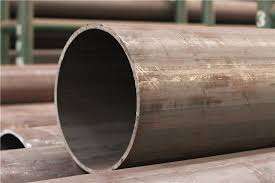
Introduction
In the complex world of trade and commerce, every product is assigned a specific code for seamless identification and classification. For Mild Steel (MS) Pipes, this code is known as the Harmonized System of Nomenclature (HSN) Code. Let’s unravel the significance of the MS Pipe HSN Code and its role in international trade and taxation.
What is HSN Code?
The Harmonized System of Nomenclature (HSN) Code is an internationally accepted system for the classification of products in trade. Developed by the World Customs Organization (WCO), the HSN Code comprises a series of numerical codes assigned to different products, facilitating uniformity and clarity in international trade transactions.
HSN Code for MS Pipes:
The HSN Code for MS Pipes specifically classifies them within the broader category of iron and steel products. The code is determined based on various factors, including the type of metal, dimensions, and other distinguishing features. For MS Pipes, the HSN Code falls under Chapter 73 of the HSN Code structure, which covers articles of iron or steel.
Significance of MS Pipe HSN Code:
International Trade:
In the global marketplace, where goods cross borders seamlessly, the HSN Code serves as a universal language. It ensures that MS Pipes are recognized and classified consistently across different countries, facilitating smoother international trade.
Customs and Tariffs:
Customs authorities use the HSN Code to determine the appropriate tariffs and duties for imported and exported goods. The code streamlines the customs clearance process and aids in accurate taxation based on the nature and characteristics of the product.
Uniform Classification:
The HSN Code provides a standardized method for classifying MS Pipes, eliminating ambiguity and ensuring that all parties involved in a trade transaction have a clear understanding of the product being traded.
Structure of MS Pipe HSN Code:
The HSN Code for MS Pipes typically follows a numerical structure. The first two digits represent the chapter under which the product falls, and subsequent digits provide more specific details about the product. For example, the HSN Code for MS Pipes might look something like this:
HSN Code for MS Pipes: The subsequent digits further specify the type of iron or steel product, including dimensions, coatings, or other distinguishing characteristics.
Application in GST:
In the context of the Goods and Services Tax (GST) in India, the HSN Code plays a crucial role. Businesses use the HSN Code while filing their GST returns, providing detailed information about the goods they have traded. For MS Pipe manufacturers, traders, and distributors, correctly classifying their products under the relevant HSN Code ensures compliance with GST regulations.
Determining the Correct HSN Code for MS Pipes:
Material Composition:
The type of material used in the MS Pipes, in this case, mild steel, is a key factor in determining the HSN Code. Different materials fall under different chapters and codes within the HSN structure.
Dimensions and Specifications:
The dimensions, thickness, and specifications of the MS Pipes influence the finer details of the HSN Code. These specifics help in narrowing down the code to accurately represent the product.
Coating or Treatment:
If the MS Pipes have undergone any special coating or treatment, this information is considered in the HSN Code assignment. Coatings may include galvanization or other protective measures.
Use and Application:
The use and application of MS Pipes can also influence their classification. Whether they are intended for construction, industrial use, or other specific applications may impact the assigned HSN Code.
Benefits of Accurate HSN Code Classification:
Legal Compliance:
Accurate classification under the appropriate HSN Code ensures legal compliance with international trade regulations and GST requirements.
Facilitates Trade Documentation:
The HSN Code simplifies trade documentation, making it easier for businesses to convey precise information about their products in a standardized format.
Tariff Determination:
Customs authorities rely on the HSN Code to determine applicable tariffs and duties. Correct classification avoids disputes and delays in customs clearance.
GST Reporting:
Businesses use the HSN Code while reporting their GST transactions. Accurate reporting contributes to transparent and efficient tax compliance.
Conclusion:
In the intricate web of global trade and taxation, the MS Pipe HSN Code serves as a linchpin. This ensures that these essential products are accurately classified, allowing for seamless international trade, transparent taxation, and legal compliance. As businesses navigate the complexities of commerce, understanding and applying the correct HSN Code for MS Pipes becomes not just a regulatory requirement but a strategic necessity in the interconnected world of trade and taxation.
- by goyalsteeltubes123
- on January 10, 2024
